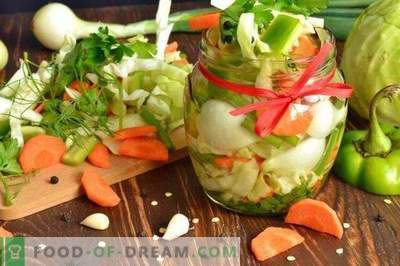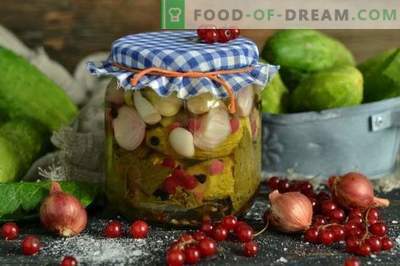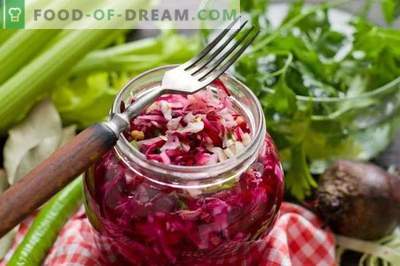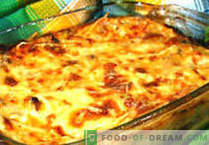Traditional methods of harvesting vegetables - fermentation, salting, urinating - are known to people from ancient times. I propose an original recipe for cooking fruit and vegetable assortment.
In the multi-layer method of harvesting combines popular experience salting and modern recommendations of the science of nutrition. Such blanks are convenient both in rural areas and in urban environments. Multi-layered stacking allows the use of wooden tubs, glass and enamel ware. The shelf life of blanks at temperatures from 0 to 4 ° can be from several weeks to six months.
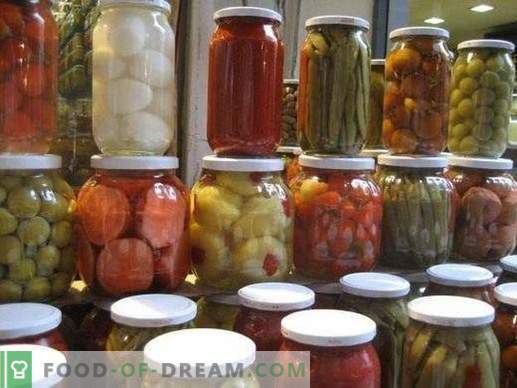
© ccarlstead
A set of raw materials: beets, carrots, white cabbage, red and colored, pumpkin, zucchini, turnip, radish, onion, garlic, horseradish, raspberry leaves, currants, nettle shoots and quinoa.
Cabbage and root vegetables to clean, and pumpkin and zucchini thoroughly washed and used with seeds and peel. Onions, too, peel, garlic divided into cloves and free from scales. Raspberry and currant leaves, rinse thoroughly, nettles and quinoa, too, rinse. Prepared vegetables are cut into thin slices, onion cut into 4-6 pieces.
Prepare food in layers (scalded barrels, enamel buckets, pots or glass jars). For example, on a layer of leaves of raspberry, currant, nettle and quinoa lay chopped beets, carrots, turnips and radishes, stratifying the whole thing with garlic, onions and horseradish. Shuffle the layers until the dishes are completely filled. The first and last layer is picked from the leaves, garlic and horseradish. Then prepare the fill. On 1 liter of boiled water, cooled to room temperature, add two teaspoons of salt.
Fill the container with the fill so that the mixture is completely covered with liquid. In the tub put a wooden circle, and it bends. The fermentation process at room temperature occurs in 2-3 days, then the billet is put in a cool dark place. In a week, the platter is ready to eat.
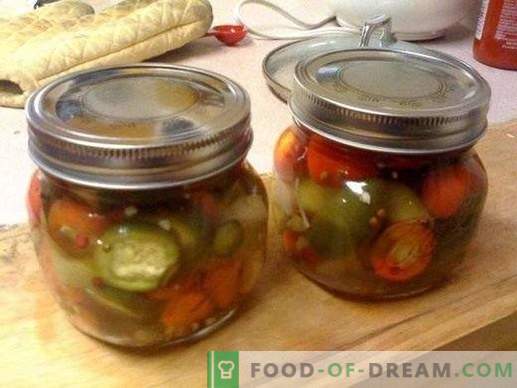
© Ben Brown
In the process of souring, it is necessary to periodically ensure that the product is covered with liquid, in necessary cases, pouring is added. It is better to master multilayered preparation from simple mixes and in small volumes. For example, beets, carrots, cabbage, onions, garlic, dill, parsley, celery, horseradish can be put in an enamelled bucket. If you like the blank, the next time you can cook it in greater volume. Pickle is suitable for filling soups - it gives a pleasant aftertaste.
And a couple more recipes.
Vegetable marinated platter
Chop cabbage; cut green tomatoes; clean the sweet pepper from the seeds, blanch for 3-4 minutes in boiling water, and then chop finely. Cucumbers cut into slices, onion-cubed. Mix all the vegetables, put them in jars on the shoulders, lightly press down. Pour into a hot pot and pasteurize at a temperature of 90 ° C: half-liter jars - 20 minutes, liter - 25 minutes, two-liter - 30 minutes.
- Per 1 kg of cabbage - 1 kg of cucumbers, 1 kg of green tomatoes, 1 kg of sweet pepper, 300 g of onions, 2 g of fennel seeds. On a liter jar - 3 ~ 4 bay leaves, 1-2 buds of carnation. Filling composition: 1 liter of water - 50 g of salt, 100 g of sugar, 0, 4 l of 9% vinegar, 5 ~ 6 pcs. sweet peas, pepper, 2 spoons of vegetable oil.
Assorted vegetables
All vegetables mince and cook for 1 hour. Then pour into jars and close the lids.
- For 5 kg of tomatoes - 500 g of carrots, 500 g of sweet pepper, 5 pods of bitter pepper, 500 g of sour apples, 500 g of onion, 500 g of garlic, 400 g of dill, 500 g of parsley, 500 g of vegetable oil, salt to taste.


